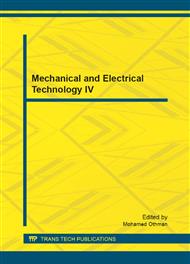p.252
p.256
p.260
p.267
p.271
p.276
p.282
p.287
p.292
Effect of Micron Size Ni Particle Addition on Microstructure, Thermal and Mechanical Properties of Sn-9Zn Lead-Free Solder Alloy
Abstract:
This study had been carried out to investigate the effect of micron size Ni particle addition on the microstructure, melting behavior and mechanical properties of the ternary Sn-9Zn solder alloys. Different weight percentage, viz. 0.25, 0.5 and 1 of micron size Ni particle was added in the liquid Sn-9Zn alloy and then cast into the metal mold. Melting behavior was studied by Differential Thermal Analyzer (DTA). Microstructural investigation was conducted using Optical and Scanning Electron Microscope (SEM). Tensile properties were determined at a strain rate 3.00 mm.min-1. The results indicated that Ni addition increased both the melting point and solidification range of the Sn-9Zn solder alloy. The microstructures of newly developed ternary Sn-9Zn-xNi solder alloys consisted of fine needle-like α-Zn phase dispersed in the β-Sn matrix. It was found that small amount of Ni (0.25 wt. %) addition refined and dispersed the Zn needles throughout the matrix. Besides, enhanced precipitation of Zn in the β-Sn matrix was also observed. All these structural changes increased the hardness and tensile strength of Sn-9Zn alloy with the addition of Ni particle to a certain amount.
Info:
Periodical:
Pages:
271-275
Citation:
Online since:
November 2012
Authors:
Price:
Сopyright:
© 2012 Trans Tech Publications Ltd. All Rights Reserved
Share:
Citation:


